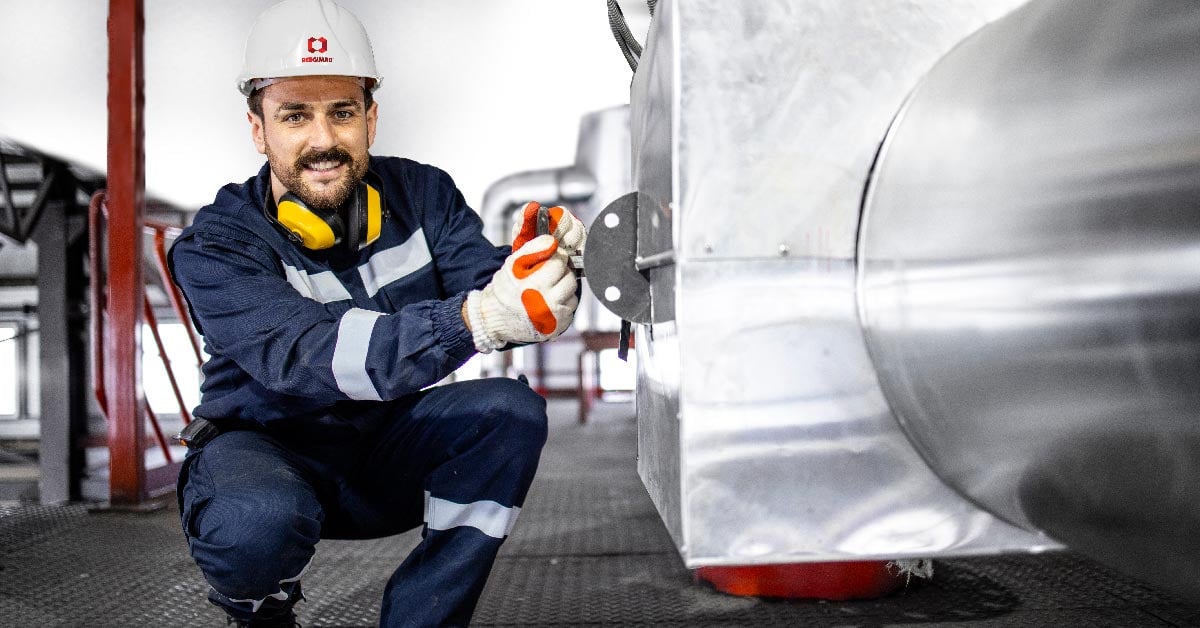Service & Maintenance | Blast Resistant Buildings
Maintaining an HVAC in a Blast-Resistant Building


The great thing about blast-resistant buildings is that they are almost maintenance-free. However, at RedGuard, we are the first to admit that “almost” maintenance-free does not mean maintenance-free. One area that DOES require regular maintenance, as in any building, is the heating, ventilation, and air conditioning, or HVAC system.
We’ve written about problems with blast-resistant buildings in the past, and it’s important to note that we are associating the word “problems” with the reasons for service calls on blast-resistant buildings. Of course, there are numerous benefits of blast-resistant buildings, and they obviously solve far more problems than they have. Regardless, some services will be inevitable.
HVAC is an area that will require service calls during the life of a blast-resistant building. However, to prevent more calls and to preserve the life of your HVAC, there are a few practices and a quick checklist that you can tick regularly.
In practice, these two habits are essential when it comes to HVAC in a blast-resistant building:
- First, always keep the thermostat no cooler than 72 degrees during the summer and no warmer than 70 degrees in the winter.
- When at all possible, always keep the door to the building closed. Leaving the door open allows the external air to enter the building and can cause the HVAC to work harder to keep the temperature constant in the building. Working harder can cause the condenser to freeze and shut the entire HVAC system off until it is serviced.
Those two habits, along with the practices below, will help you prevent the most serious issues on the HVAC of your blast-resistant building.
Change the Filter Frequently on your BRB’s HVAC
It is vital that the filter is checked each month, at a minimum. If dirty, it should be replaced. On sites with higher amounts of dust and particulates in the air, like those with Coker or Alkylation units, the filter may need to be checked and changed weekly.
An HVAC Checklist for your Blast-Resistant Building
A few items to be checked require using both your eyes and ears as part of the inspection. Each time you check the air filter and change it out, take a look at the unit as a whole and take note:
- First, look at the fan. Check to see that it is spinning correctly and is unimpeded. Look to see if it wobbles or appears balanced.
- Next on the visual list is the moving parts. Without touching anything, watch the belts and pulleys to make sure they are running smoothly. Do you see any “bounce” in the belts, or do any of the pulleys “squeal”?
- Take a look at the drain pan and drain line. Are they full, or do they appear to be holding water from the condenser? Holding water is a bad sign.
- The coils and evaporator should also be checked regularly. Either look them over or have a technician check for dirt and debris.
- Finally, observe how the unit sounds. Is the motor running quietly and smoothly, without grinding or chugging sounds?
If any of the above issues are present during your visual inspection, the unit should be serviced as soon as possible. Advance planning is essential since an extensive service could call for the electricity to the building to be shut down.
If you’ve inspected your blast resistant building’s HVAC and discovered the need for a service call, give the service team at RedGuard a call.
Adam Crocker
Adam Crocker is the field service manager at RedGuard and has been at the company since 2019. Both his previous time serving the petrochemical industry and his military background gives him a unique understanding of the industry and has kept the RedGuard service team operating smoothly. His goal is to keep his team operating safely and professionally while delivering efficient service to customers to keep their operations running safely.


